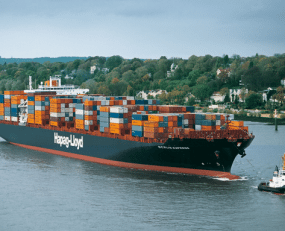
Following recent news news and developments it appears that the container shipping market has broken a habit of a lifetime and is continuing its aggressive restructuring.
The latest development is from South Korea where Hanjin and Hyundai Merchant Marine (HMM) have both entered discussions with their creditors, led by the Korea Development Bank, for restructuring of their debt. However, the update from Seoul is that the banks may take a tough line with businesses that face significant market head winds as there are just too many shipping related debtors facing problems.
Just prior to this was the commencement of negotiations about a merger between Hapag-Lloyd and the United Arab Shipping Company (UASC). Both have confirmed that they are in discussions about “forms of cooperation including a potential combination of their mutual container shipping operations”. Hapag-Lloyd stated that any new structure would have an equity split based on the relative values of the two companies, with 72% for Hapag-Lloyd and 28% for UASC. Such a combination would create a company with around 7-8% of total container shipping capacity, with the UASC fleet characterised by the ownership of six new 18,000 TEU vessels. However, the deal is not yet agreed.
As a result of previous merger and take-overs, Hapag-Lloyd is owned by a number of shareholders including Klaus-Michael Kuehne, the city of Hamburg and CSAV the latter being the result of the absorption of the CSAV container business. UASC is largely owned by the Qatari government.
The clear direction of the sector is towards consolidation around a few large players, who ought to be able to exercise some control over the availability of capacity on the market. Smaller companies will be squeezed-out. This is the theory, however looking at the Hapag Lloyd/UASC deal, it relies on such companies removing ships from service rather than simply re-introducing them under a new flag. Profitability including return on capital, will decide the success of any restructuring and this is still some distance away even in the largest container shipping companies.
Source: Transport Intelligence, 27th April 2016
Author: Thomas Cullen